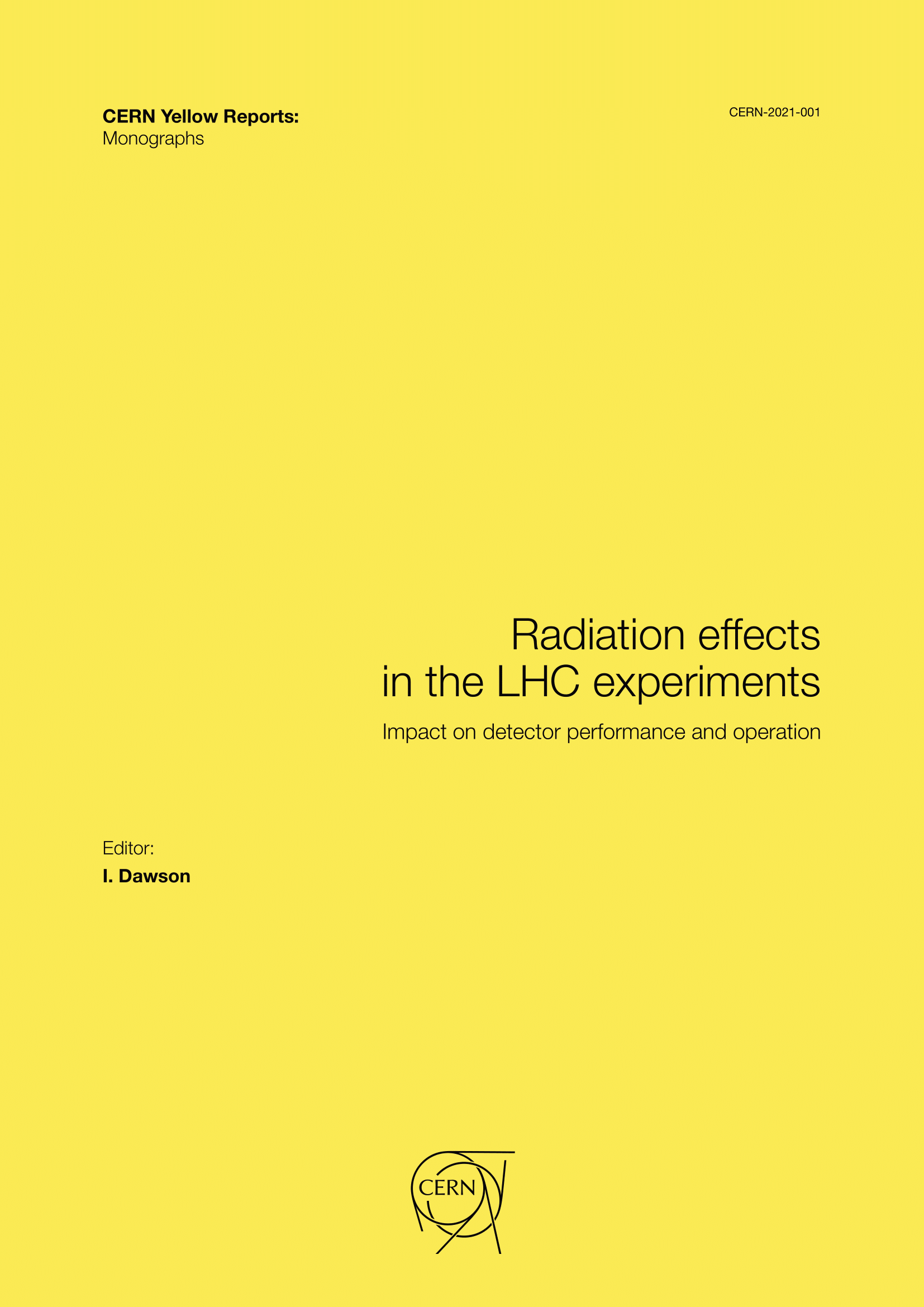Simulation of radiation environments
DOI:
https://doi.org/10.23731/CYRM-2021-001.35Abstract
Simulating radiation environments is crucial in the design phase of new hadron collider experiments or upgrades, especially when extrapolating to new centre of mass collision energies where previous experience cannot be relied on. The generation of radiation fields in the LHC experiments is dominated by proton–proton collisions, with contributions from beam-gas interactions and other machine losses. It is therefore essential to first reproduce the proton–proton collisions, using Monte Carlo event generators such as PYTHIA8 and DPMJET-III. This part of the simulation chain is discussed in Section 4.1.
The particles originating from the proton–proton collisions interact with the detector and machine material, causing electromagnetic and hadronic showers which give rise to the complex radiation fields seen in the LHC experiments. This second part of the simulation is dealt with using advanced Monte Carlo particle transport codes such as FLUKA, MARS, or GEANT4. An overview of these codes is given in Section 4.2.
Key radiation quantities of interest are extracted from the simulations, such as 1 MeV neutron equivalent fluence and total ionizing dose, and these are discussed in Section 4.3. It is these quantities that are needed by the detector systems for evaluating radiation damage and predicting sensor and electronic performance over the lifetime of the experiment. In Section 4.4, the simulated predictions of radiation backgrounds for each of the experiments is presented. Finally, in Section 4.5, we offer general conclusions and recommendations for the future.
Downloads
Published
Issue
Section
License
Copyright (c) 2021 CERN

This work is licensed under a Creative Commons Attribution 4.0 International License.
Authors who publish with this publication agree to the following terms:
- CERN retains copyright and publishes the work licensed under the Creative Commons Attribution License 4.0 that allows others to share the work with an acknowledgement of the work's authorship and initial publication in this series.
- Authors are able to enter into separate, additional contractual arrangements for distribution of the published version of the work (e.g., post it to an institutional repository or publish it in a book), with an acknowledgement of its initial publication in this series.
- Authors are permitted and encouraged to post their work online (e.g., in institutional repositories or on their website) prior to and during the submission process, as it can lead to productive exchanges, as well as earlier and greater citation of published work (See The Effect of Open Access).

